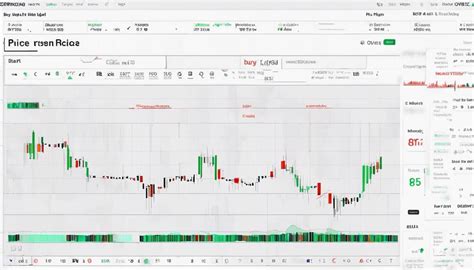RSI Usage (Relative Resistance Index) In Cryptocurrency Trading: Best Practices
The world of cryptocurrency trading is a high -risk, high reward game. With the increase of decentralized finance (Defi), blockchain technology and cryptocurrency markets, traders are constantly looking for new strategies to achieve an advantage. Among the different technical indicators used in cryptocurrency trading, one that stands out to be particularly effective is the relative force index (RSI). In this article, we will explore how RSI can be used in cryptocurrency trading, including its best practices.
What is the relative force index (RSI)?
Relative resistance index (RSI) is an impulse indicator developed by J. Welles Wilder Jr. measures the extensive price changes to determine surveillance conditions or market exceeding. RSI calculates two key values:
- Rs (relative resistance): the ratio between price change and price range.
- RSI : A number between 0 and 100 representing how many standard deviations away from its average value is the current price.
RSI is calculated using the following formula:
RSI = (100 – Average RS) / Average Rs
where the average RS is the average of the last in periods.
How to use RSI in cryptocurrency trading: best practices
The use of RSI in cryptocurrency trading offers more benefits including:
- Risk management : RSI can help traders to identify overestimated or outdated conditions, allowing them to adjust their strategies and avoid significant losses.
- The analysis of the moment : RSI is an impulse indicator that provides information about the power of price movements.
- Divergence detection : Using RSI in combination with other indicators (for example, Bolninger bands), traders can identify potential divergence between market and market conditions.
Here are a few best practices to consider when using CRYPTODENDER trading:
Setting up RSI parameters
When configuring the RSI parameters, consider the following:
- window size : Determine how many periods to use for calculating average RS (eg 14 or 21).
- The length of the period : Choose a duration that balances precision and strength.
- Overlapping/Supervisory thresholds : Set specific purchase and surveillance thresholds based on your trading strategy.
Interpretation of RSI levels
RSI levels are crucial in determining the power of price movements:
* overlap (70-100) : Traders can consider taking positions that involve risks, as the market is likely to be exceeded.
* Outld (30-69) : Traders should wait for a withdrawal before entering positions, as the market is likely to be overcome.
RSI use in trading strategies
RSI can be used in various trading strategies such as:
- The following trend : RSI can be used to confirm the direction of the trend and the input/output levels.
- Scalping : RSI can help traders identify potential reversal points in a short time (for example, 5-minute candles).
- The range of range

: RSI can provide information on the power of price movements to the specific interval limits.
best practices for using RSI
To make the most of the use of the RSI in cryptocurrency trading:
- Use a consistent time range : Paste a single time interval (for example, 4-hour candlestick) to analyze price movements.
- Adjust the parameters and thresholds : Continuously monitor the trading performance and adjust the parameters and thresholds, as required.
- Combine with other indicators : Use RSI together with other technical indicators (eg Bolninger Bands, MACD) for a more comprehensive analysis.
Conclusion
Relative resistance index is a powerful tool that can be used in cryptocurrency trading to identify overestimated conditions or surveillance and impulse changes.